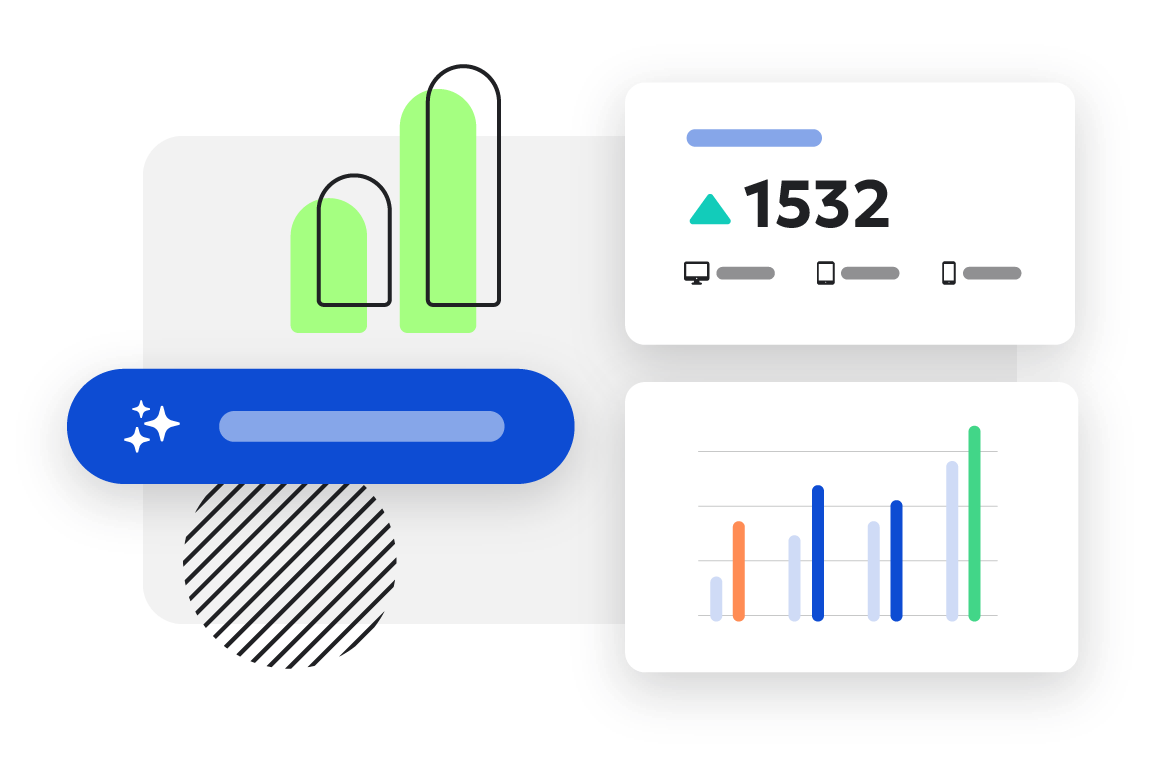Three obstacles to data-driven marketing and how to overcome them
- By Georgia James - May 04, 2020 Web Analytics
What is data-driven marketing?
Data-driven marketing is the act of aggregating all your available data, interpreting it, and applying it to your marketing campaigns to capture customers and grow your business. A good example of this data-driven approach is Spotify, which harnesses customer data to build custom playlists based on each user's listening activity.
The key benefit of data-driven marketing is that it promises to show ROI of marketing campaigns. When done correctly it can also provide a competitive advantage in customer loyalty, satisfaction, and lead generation.
However, it isn’t always easy – many marketers are confused about how to successfully plan and execute data-driven campaigns. Here are the three biggest obstacles in data-driven marketing, and solutions for overcoming them.
Obstacle 1: Capturing and using high-quality data

Data should form the core of any successful marketing strategy. Fortunately, most businesses are teeming with data from multiple channels. Social media platforms, Google Analytics, CRM software, and third-party tools all generate masses of data, but that doesn’t mean this data is accurate or beneficial for your marketing goals.
On top of that, privacy regulations are changing every day. GDPR and privacy regulations add an extra layer of complexity for marketers. These roadblocks can make it difficult to gather and utilize relevant personal information about your market.
Even if you have a mass of data about your target audience, it’s a challenge to keep this data up to date. How can you know you have your customer’s real email address, current place of work, or correct job title?
Solution: When aggregating data, make sure it’s both accurate and useful. Successful data aggregation begins with a clear understanding of your big-picture marketing goals. For example, if your marketing goal is to…
- Build brand awareness or authority, collect likes, follows, and reactions on social media. Site traffic, bounce rates, and keywords that people are using to find you are also helpful.
- Improve quality and quantity of leads, log the number of inbound requests like form entries, calls, or emails.
- Nurture and engage leads, you’re best off drilling down into your market’s personal data (without invading their privacy, of course). This is where it begins to matter whether they’re most interested in Solution A or B, and what their specific pain points are. This data may come from phone or chatbot conversations, emails, or other direct interactions with your company.
Once you’ve identified the best data to capture to achieve your marketing goals, put practices in place to keep that information consistent, accurate and up-to-date. For example, you might survey your customers to determine which products they’re most interested in, or ask them directly if the information you have on file is the latest.
Obstacle 2: Siloed data

Data is “siloed” when it exists across different isolated locations and can’t mix with other data. For example, you may have a customer’s email address recorded in your email contact list (one silo) and again in a list of leads generated from a web form (another silo). Fragmented data is often the result of data accumulated by different teams, such as sales and marketing, through various channels.
Siloes are problematic because they produce no centralized, integrated overview of your data - which is necessary for making informed decisions.
Additionally, multiple data sets across your organization make it difficult to know which data is the most recent or accurate. From a marketing perspective, this makes it a challenge to identify information about the target market or to personalize campaigns.
Data silos can happen for multiple reasons:
- Only specific people have access to certain data
- People don’t want to share data access with people from other business units
- Legacy systems prevent data from moving freely
- Lack of coordinated data strategy
- Data being stored in varying formats
Solution: The first step to creating a data-driven organizational culture and get data flowing between different sections of the business is to improve communication. Implement a messaging tool like Slack or make it the standard to communicate within your existing project management or enterprise resource planning (ERP) tool. The more comfortable your employees feel about reaching out to each other for information, the more you can break down silos and gain the knowledge you need to improve your marketing campaigns.
Next, consider how you can improve the flow of information without making any big changes to your organization’s toolset. For example, you may only be using your CRM for storing customer data and automating email campaigns, but what if it also has sales pipeline tools? See if you can make better use of what you have, either by utilizing other features or employing an automation solution like Zapier to move data from one location to another.
Additionally, find ways to “digitize” offline data. For example, if you have an in-store advertisement, create a unique URL (a UTM code) that viewers can follow to redeem an offer. You can do the same with text codes, phone numbers, and QR codes, all of which will trace the customer’s purchase back to where they originally saw the message.
Finally, while all of these solutions help avoid data siloing in the short-term, they may not be the best for your organization over the long-term. If you believe your organization as a whole could benefit from an all-in-one tool, use the ROI from your data-driven marketing campaigns to make a business case for it.
Obstacle 3: Analyzing data and applying it to decision-making

There are many reasons why it’s difficult to analyze and apply data to your marketing campaigns, from not understanding the data, to uncertainty about communicating statistics to other departments. Here are the main causes behind this obstacle, and how you can take action on the data you collect.
Too many tools to master
A single tool like Google Analytics could keep even the most data-savvy marketer on their toes, but when you add in other tools and software to the mix, it’s more than a full-time job.
Solution: Use a tool that aggregates data into a single dashboard so your team isn’t wasting time switching between tools. If this isn’t an option, consider having different team members specialize in different tools, for example, SEO experts, PPC leads, and Facebook Ads experts, rather than a team of generalists.
Lack of training, or being stuck in old-school thinking
Marketing has historically been part art, part science. These days, marketers have the necessary information to gauge whether or not their campaigns are actually working.
Some marketers accustomed to the guesswork associated with traditional marketing have little or no training in data analysis. In fact, a 2019 study revealed that only one in five marketers know how to effectively interpret and utilize data. Beyond that, even if a marketer understands how to use data, there’s a chance that other stakeholders don’t understand it — creating a communication barrier that hampers business growth.
Solution: Make time and allocate budget for your marketing team to learn the data skills they need. This can be by attending professional conferences, obtaining certifications, or participating in informal “lunch and learns” during the workday. It’s a good idea to teach your team about data visualization too. Data visualization is the way you present statistical information to decision makers that inspires them to act.
Uncertainty about what to do with data
Data needs to be actionable. Even if the data available makes sense to your marketing team, it’s not always apparent what to do with it.
Solution: Present the data to your marketing team and call for a brainstorming session. How can you use what you know to personalize your marketing campaigns? While data can strengthen your marketing campaigns in a number of ways, one of the best applications is customer-centric communication.
Data-driven marketing enables you to present the right messages, to the right audience, at the right time – otherwise known as personalization. Consumers now expect personalized marketing, with one study showing 84% of B2C (and 83% of B2B) customers said that being treated “like a person” rather than a number was essential to winning their business.
Personalization should span every step of your customer’s journey, but it requires aggregation of the right data and a bit of creativity to implement. From something as simple as using a lead’s name in an email or customer support chat to cross-selling relevant products based on a customer’s purchase history, personalization may be the most game-changing application of data-driven marketing available to marketers today.
In today’s data-packed world there’s no excuse for not knowing what your target audience wants. With the right people, processes, and technologies in place, you can overcome these common data challenges and set up your marketing campaigns for success.

Ready to make the most out of your Web Analytics?
Siteimprove Analytics is an all-in-one Web Analytics solution
Schedule a demo